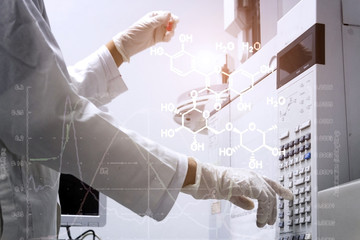Gas Chromatography
Gas Chromatography (GC) is an analytical technique used to separate and analyze compounds that can be vaporized without decomposition. It is commonly used to test the purity of substances, identify compounds in a mixture, and quantify components.
Key features:
The sample is vaporized and carried by an inert gas (mobile phase) through a column coated with a liquid or polymer (stationary phase).
Different compounds travel at different speeds, allowing separation.
A detector measures and records the time it takes for each compound to pass through the column (retention time), producing a chromatogram.
It’s widely used in chemistry, environmental testing, forensics, and the food industry.
Gas Chromatography (GC) is an analytical technique used to separate and analyze compounds that can be vaporized without decomposition. It is commonly used to test the purity of substances, identify compounds in a mixture, and quantify components.
Key features:
The sample is vaporized and carried by an inert gas (mobile phase) through a column coated with a liquid or polymer (stationary phase).
Different compounds travel at different speeds, allowing separation.
A detector measures and records the time it takes for each compound to pass through the column (retention time), producing a chromatogram.
It’s widely used in chemistry, environmental testing, forensics, and the food industry.
-
- 1. Introduction to Chromatography 03:00:00
- 2. Basic Principles of Gas Chromatography 05:00:00
- 3. Instrumentation and Operation 05:00:00
- 4. Data Analysis and Interpretation 04:00:00
- 5. Method Development and Optimization 04:00:00
- 6. Applications of GC 03:00:00
- 7. Laboratory Practicals 03:00:00
- 8. Safety and Maintenance 03:00:00

